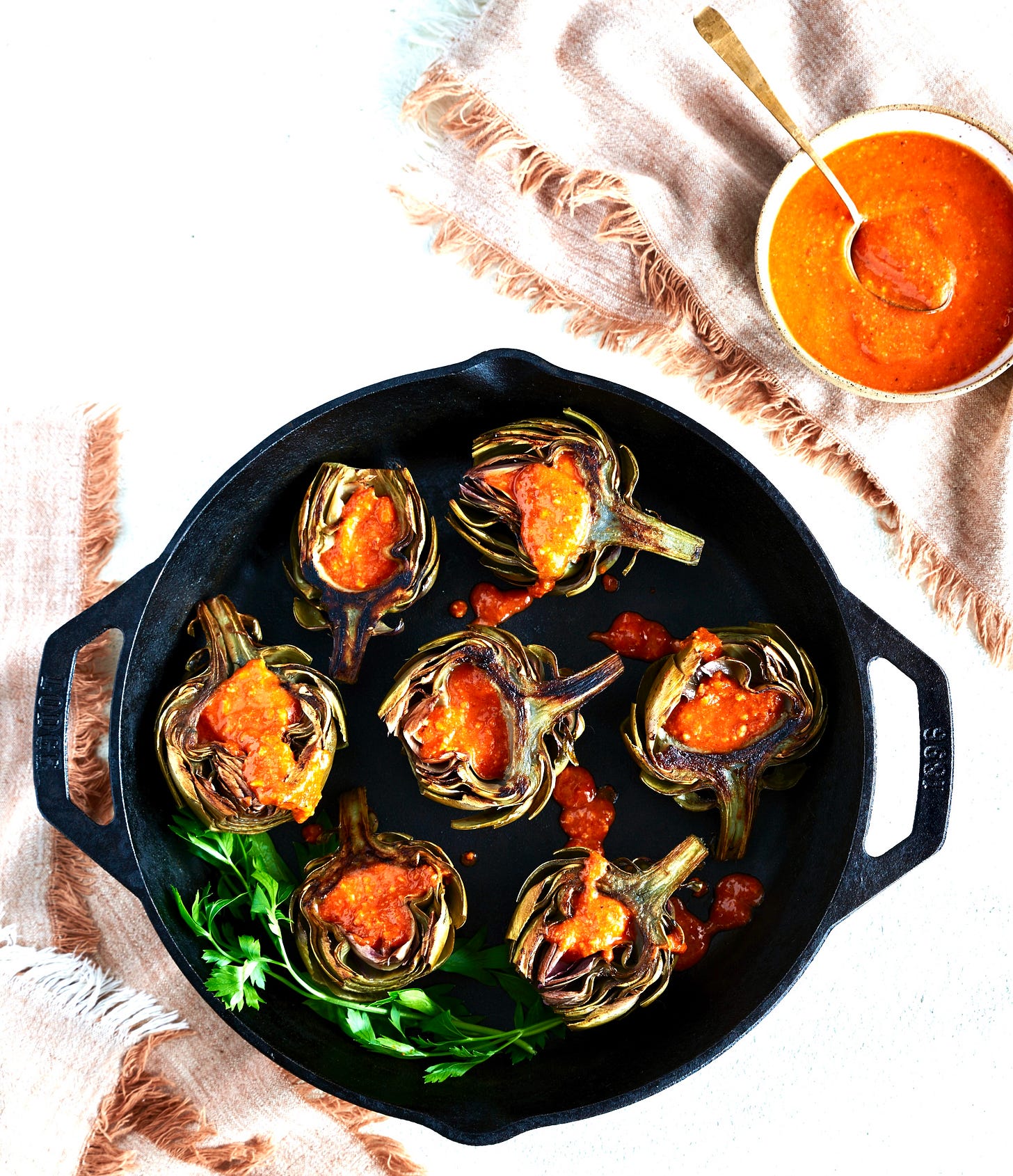Artichokes with Romesco Sauce Say Spring - No. 194
While spring officially begins March 20, what’s wrong with getting a few artichoke recipes ready?

GROWING UP, I KNEW THE PHRASE ‘’rushing the season.’’ If you wore pastels before the end of winter, corduroy in summer, or worse yet, white shoes after Labor Day, you were fashionably ahead of things, or more to the point, rushing the season.
It seems a ridiculous concept today what w…



